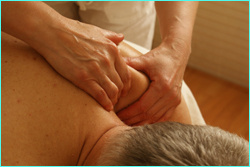Speak up!
If you've written a blog, wish to share a story, or have an idea that you believe would help those visiting the End With Care website, please send it along. If fitting, we'll add your voice to End With Care.
I've got an ideaComplementary Therapies & End-of-Life Care
Posted on January 15, 2018
 The end of life can be a time of physical pain and mental stress, both for the dying and their caregivers. While traditional palliative care supports patients during this difficult time, complementary therapies can provide an additional relief from physical and emotional burdens. Complementary therapies, when coupled with conventional medical treatments, can provide a number of benefits to patients and caregivers alike, restoring physical, mental, and spiritual well-being. In short, complementary therapies can help to improve quality of life, and quality of deaths.
The end of life can be a time of physical pain and mental stress, both for the dying and their caregivers. While traditional palliative care supports patients during this difficult time, complementary therapies can provide an additional relief from physical and emotional burdens. Complementary therapies, when coupled with conventional medical treatments, can provide a number of benefits to patients and caregivers alike, restoring physical, mental, and spiritual well-being. In short, complementary therapies can help to improve quality of life, and quality of deaths.
What Are Complementary Therapies?
Complementary and alternative therapies (CAT)  refer to products and practices not part of standard care. Some of the most common CAT include massage, acupuncture, supportive group therapy, music therapy, pet therapy, guided imagery and relaxation, and therapeutic touch.These alternatives can be a powerful way to supplement or replace traditional pain management strategies, such as the use of opioids.
refer to products and practices not part of standard care. Some of the most common CAT include massage, acupuncture, supportive group therapy, music therapy, pet therapy, guided imagery and relaxation, and therapeutic touch.These alternatives can be a powerful way to supplement or replace traditional pain management strategies, such as the use of opioids.
The Perfect Balance
Complementary and alternative therapies have increased in popularity over the years. A 2007 survey by the Centers for Disease Control and Prevention found that 41 percent of hospice care centers offered CAT or had a CAT provider on staff. That number has likely gone up in the past decade. These alternatives can be particularly beneficial to patients who are not getting adequate relief from usual medications. For some, CAT helps reduce negative side effects from medicine. For others, CAT offers a type of mental clarity that some pain-management drugs do not. Of course, CAT should not completely replace traditional medicine. If you or a loved one is interested in CAT, you should ask your physicians about incorporating alternative therapies to work alongside conventional approaches.
For more information
For additional information and links to other related resources, please visit End With Care’s end-of-life topic page on Complementary and Alternative Medicine.


